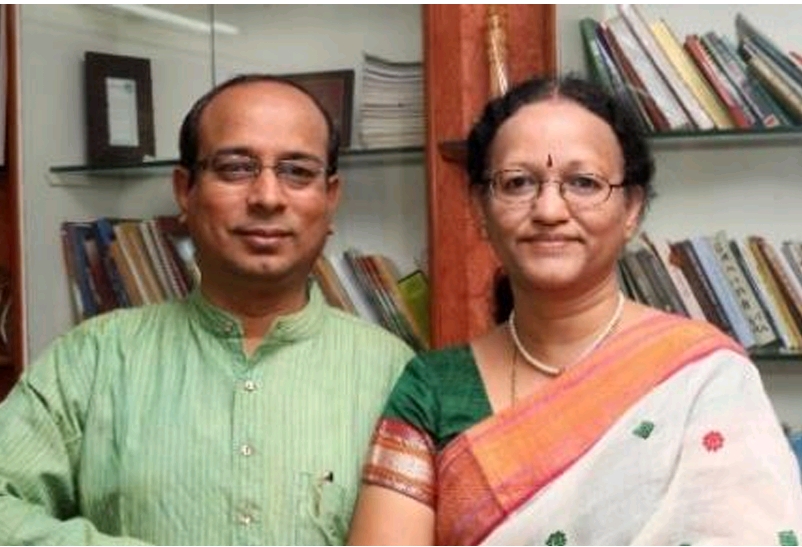Tamil New Year Puthandu – calendar, celebrations, festivities and food
.png) A food and treats arrangement for Puthandu. / Wikipedia
A food and treats arrangement for Puthandu. / Wikipedia
Puthāaṇdu vāazhthugal!
Don’t feel confused if you hear Tamilians greet each other this way on this special day in their lives. They’re just saying ‘Happy New Year!’
Puthandu (Puthu meaning ‘new’ + Andu meaning ‘year’) or Puthuvarusham (Puthu meaning ‘new’ and varusham meaning ‘year’) or Varusha Pirappu (Varusha meaning ‘year’ and pirappu meaning ‘birth’) is celebrated as the birth of a new year in Tamil Nadu. It falls on the first day of the month, Chithirai, as per the Tamil solar calendar.
When is Puthandu celebrated?
Puthandu generally falls on April 14th or 15th every year. In 2025, it falls on April 14.
Why is the Tamil New Year, Puthandu, celebrated on a different day from Ugadi?
Tamil Nadu follows a solar calendar – Sauramana calendar. In this type of calendar, the movement of the sun is used as the base for calculations of time of year. Our ancestors used the day the sun is exactly over the equator to determine the start of a new year. The word ‘Vishu’ in fact comes from Vishwadrutta Rekha meaning the equator, the line that divides the earth into two halves. This day is the equinox.
In ancient times, the equinox used to be around April 14 (today, it is March 21). This difference is because of the precision of the equinox about which you can read more here.
After this day, the sun moves northwards – into the northern hemisphere.
Ugadi falls on a different day because it is based on the Chandramana or the lunar calendar.
Is there a significance to the sun being midway across the earth?
For those following the solar calendar, this point when the sun was midway across both hemispheres was an ideal starting point to the New Year. It was a point of balance – balance of accounts, life, relations, goals and your higher Self. Basically, people lived in consonance with nature.
How do Tamilians celebrate Puthandu, the Tamil New Year?
You will find the entrance of houses decorated with colorful kolams (beautiful designs drawn on the ground with rice powder). At the center of the kolam is a kuthuvillaku or lamp that is lit to ward off the darkness in life. With the multicolored flowers, the festive look is complete.
Actually, the preparations begin a day before Puthandu. People clean their houses and get rid of old and valueless items to declutter – symbolically removing negative effects.
People place mangoes, bananas and jackfruit, raw bananas and other seasonal vegetables on a tray/plate along with rice, betel leaves, areca nuts, money – gold and silver jewelry and coins, flowers and a into mirror in front of the pooja room (prayer room).
.png) Colorful Kolam (floor art) as decoration for Puthandu. / Wikipedia.
Colorful Kolam (floor art) as decoration for Puthandu. / Wikipedia.What is the significance of each of these items?
This assortment of items placed on a tray or a plate is considered auspicious. This is the first thing you will set your eyes on (called Kanni or auspicious sight), when you wake up on New Year’s day.
Mangoes and jackfruits are seasonal fruits and represent health, rice represents nourishment, money represents wealth and prosperity, and jewelry represents beauty and adornment. The betel leaves are offered to elders in the house to express gratitude for their blessings and support. The mirror is to reflect all these good things in life and multiply them!
Basically, it is a symbolic offering that pays tribute to the agrarian society that we are and also welcomes all the things that go a healthy, happy, full and endowed life.
Is there any special food item that is made as part of New Year celebrations?
The most important food that is made on Puthandu is the Varusha Pirappu mangai pachadi. This pachadi is made with cut/sliced raw mango (sour), pieces of jaggery (sweet), neem leaves (bitter), tamarind (tangy), and red chillies (spicy). Basically, it is to herald a new year that should hopefully be filled with all the tastes or flavors of life. So, you experience a full and well-rounded life.
Inviting sweet moments on Tamil New Year’s Day is understandable but why would anyone want to invite bitter moments?
Bitter moments make the sweet moments that much sweeter. Without them, you would not appreciate the good moments as much. Plus, it is simply realistic to expect life to be a mix of both the good and bad times.

 DK Hari and Hema Hari
DK Hari and Hema Hari


.jpg)





.png)
.jpeg)
.jpeg)
.png)

Comments
Start the conversation
Become a member of New India Abroad to start commenting.
Sign Up Now
Already have an account? Login